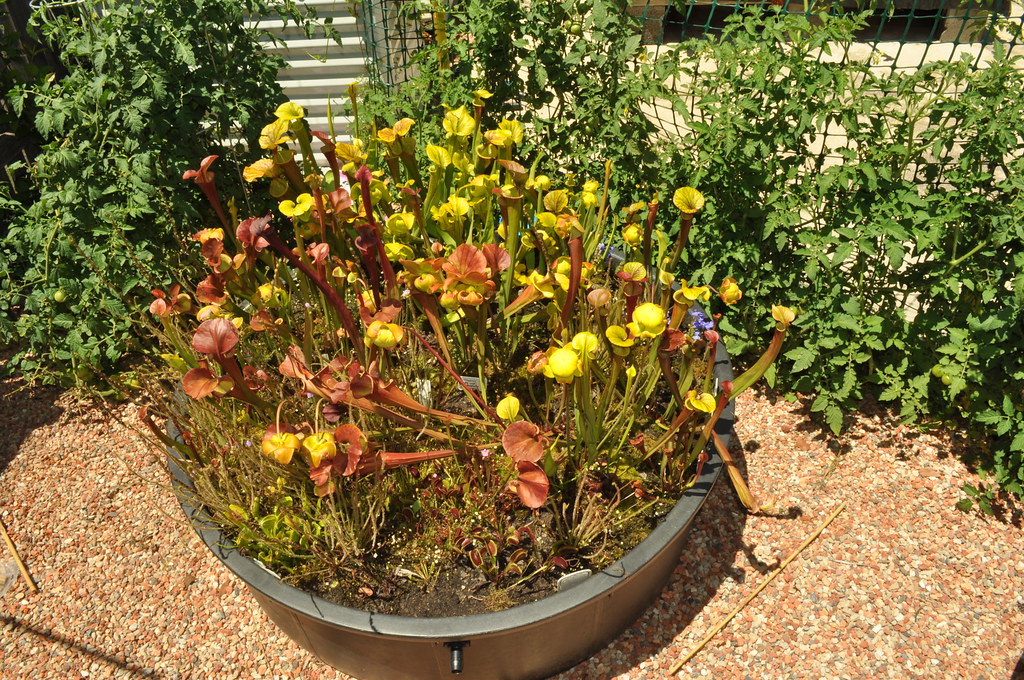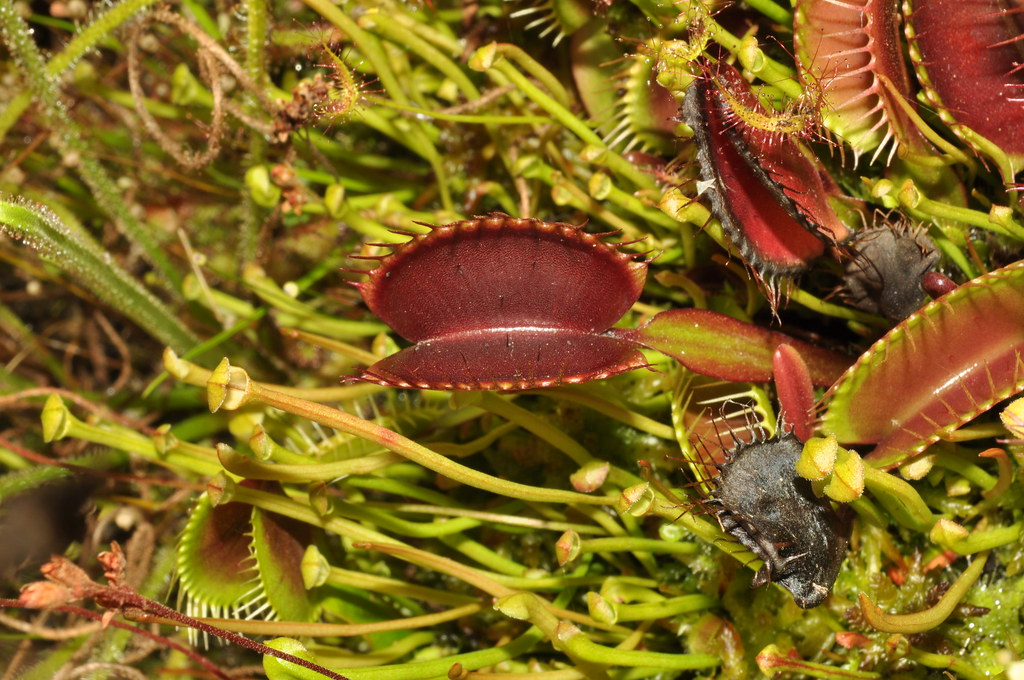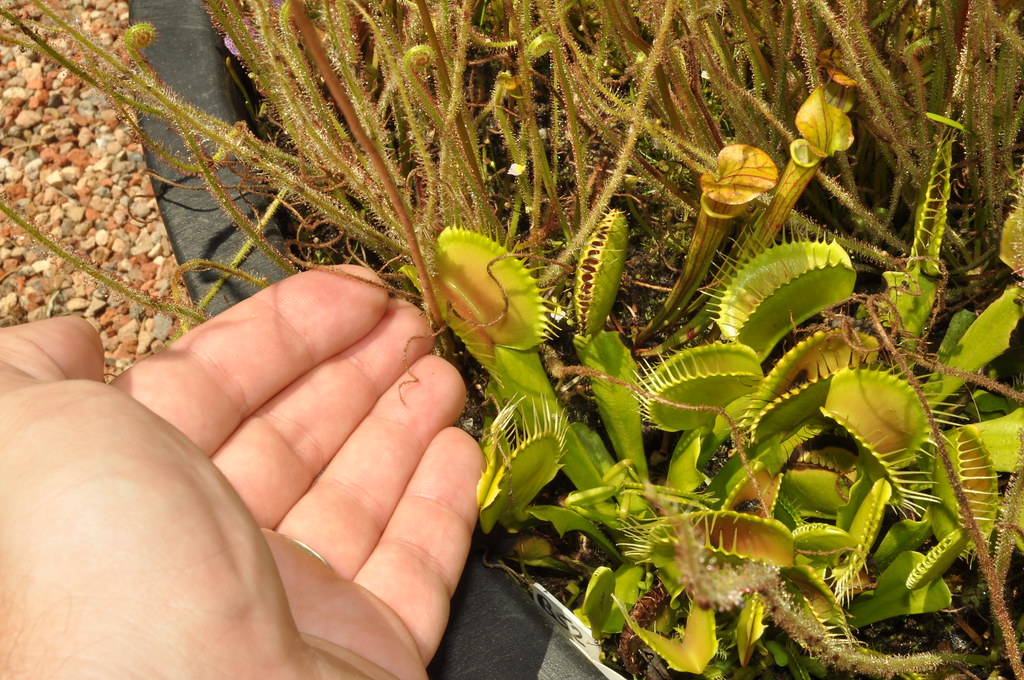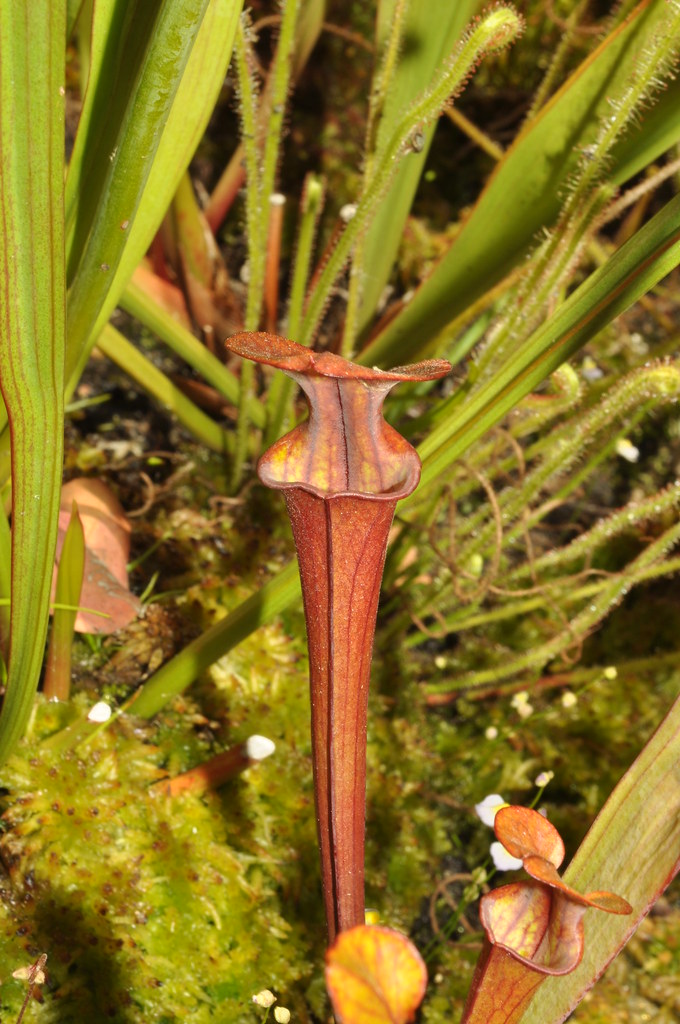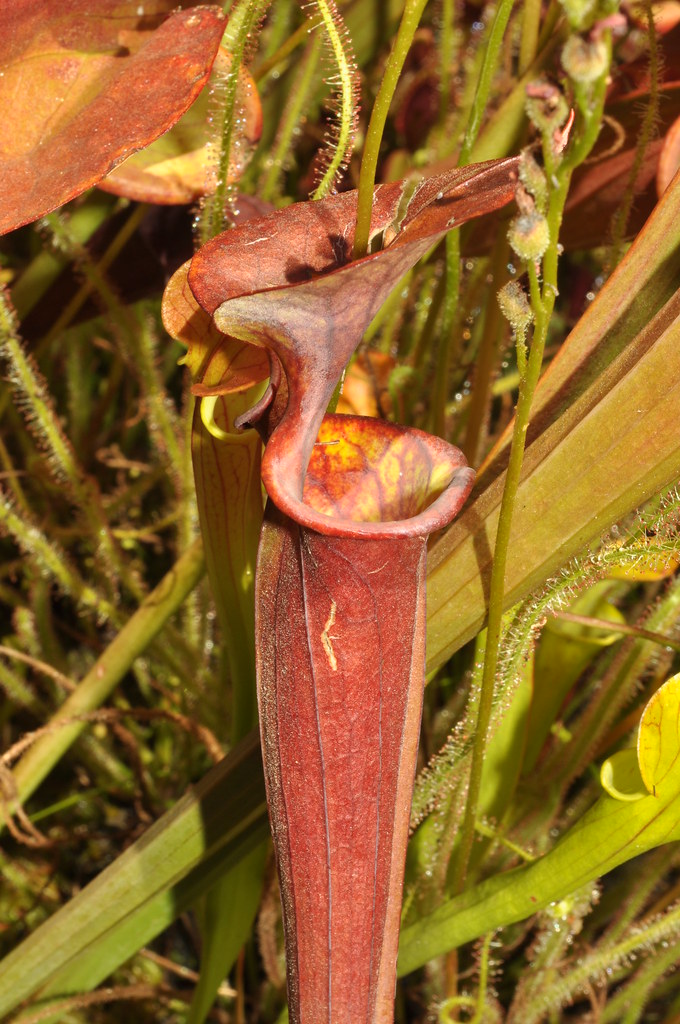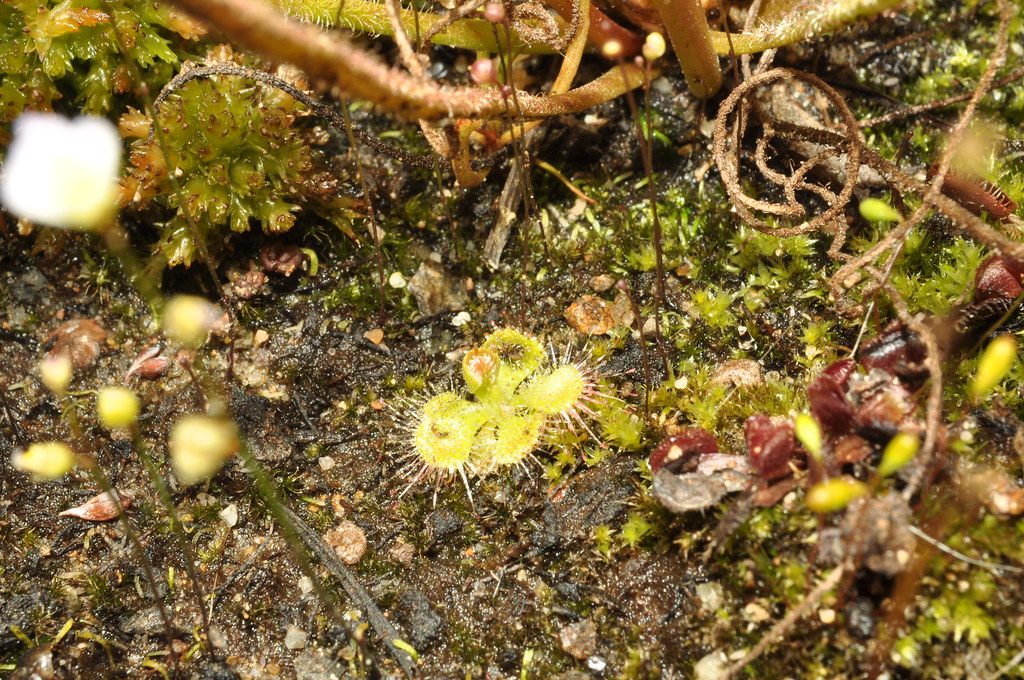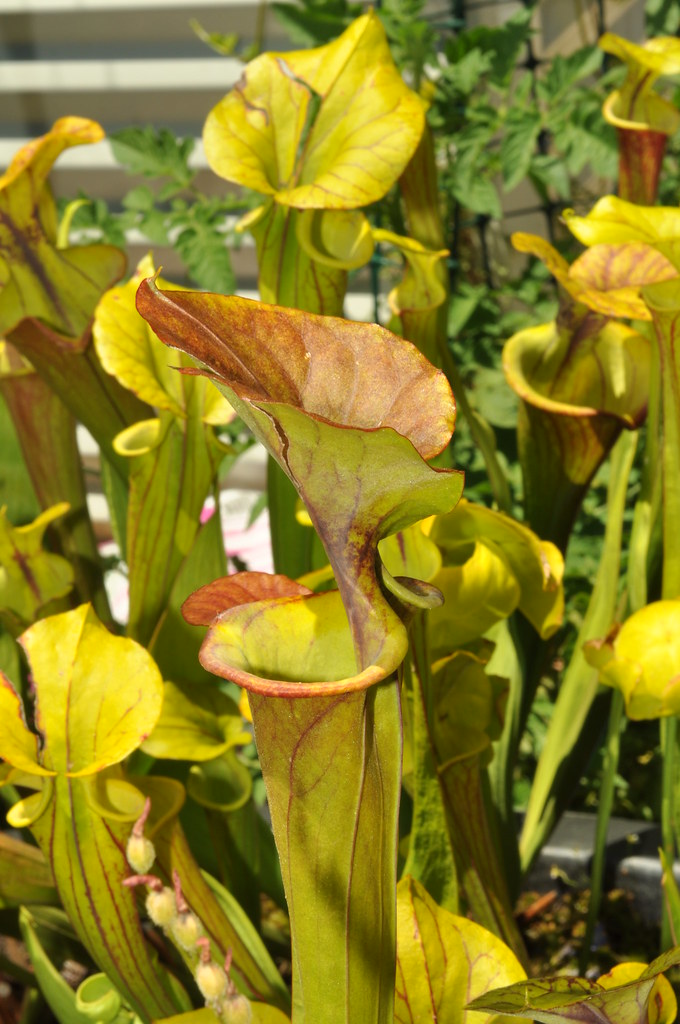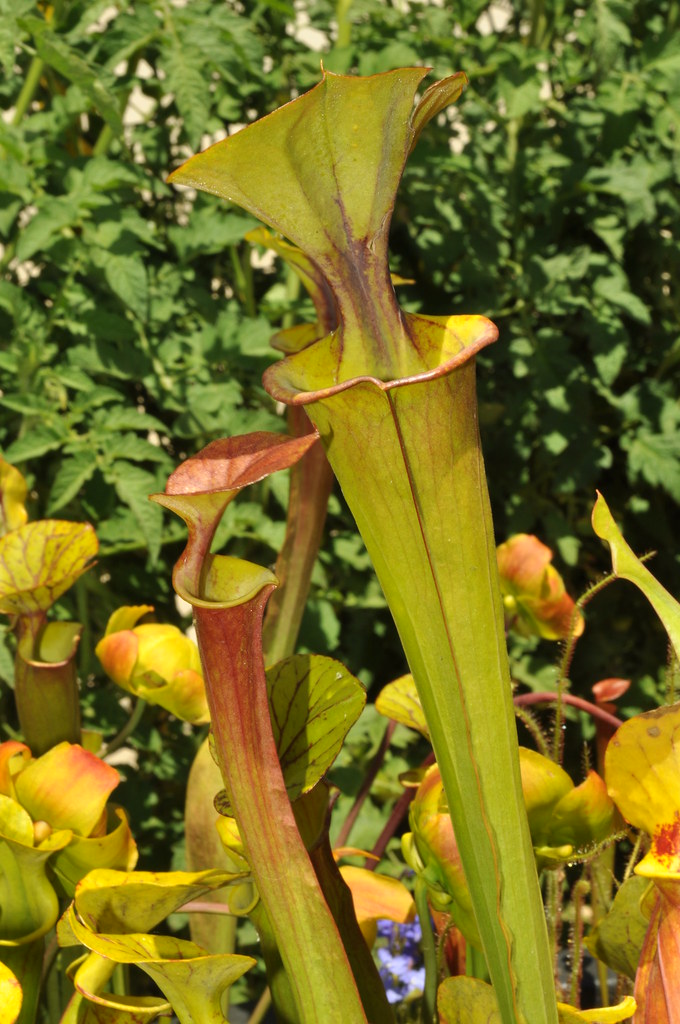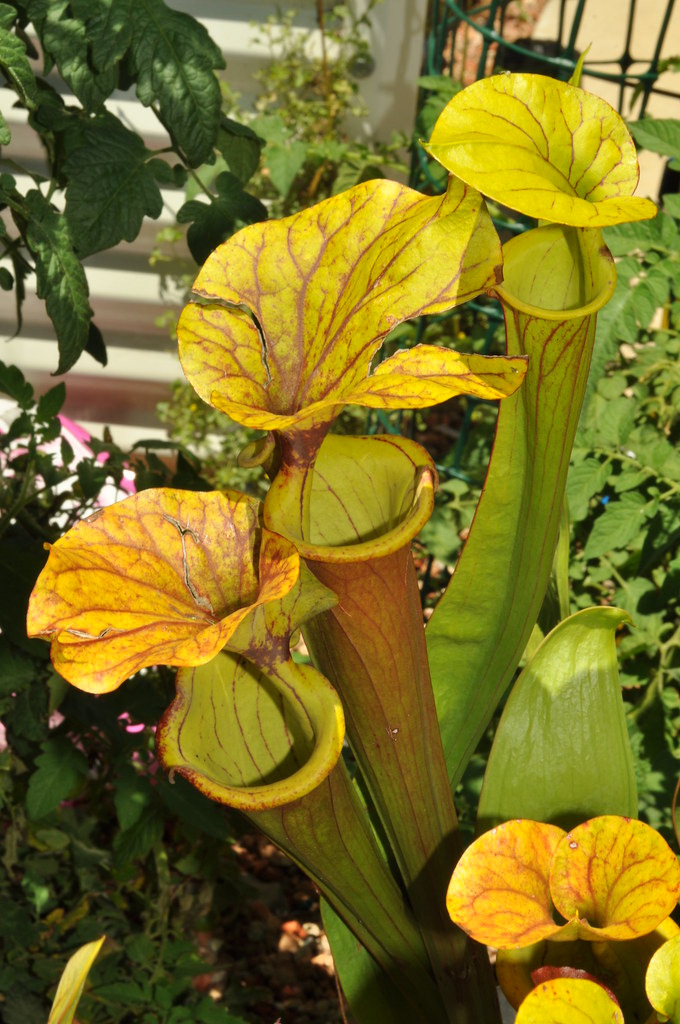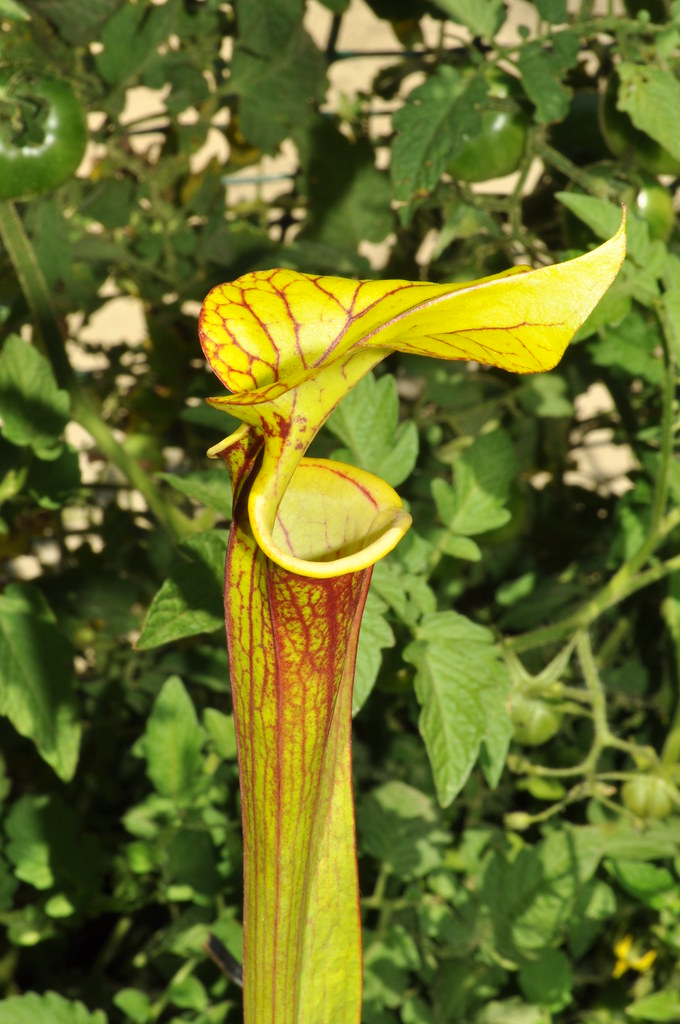This post covers the Sarra garden containing the so-called red forms of Sarracenia flava.
Part 3 covers the third garden that contains all flava forms except the antho free one.
Up first in this post is the “red” Sarracenia flava garden. Like its name implies, it contains the red S. flava varieties (ie. vars. atropurpurea, cuprea and rubricorpora). I also put in the redder VFT varieties too, like these:
This upright red clone is one that Peter and Jessica Biddlecome sold in the late 1980s, mass produced via Tissue Culture and sold via retailers such as KMart. “Better” clones like Akai Ryu, Royal Red and the Triffid Park clones rendered it pretty much obsolete. I visited Jessica the other day and through some swapping came home with a bag of their leftover plants, so they will be going in later today once it cools down.
Also in this garden is the giant VFT, B52. I got mine from John Creevey at the 2013 Sunshine Coast garden show. It is big! Note the photobombers, Drosera filiformis ssp. filiformis (it splits itself like mad each year – they are overshadowing some of the Sarracenia and VFTs for crying out loud!) and a Sarracenia flava seedling. The latter is a selfing of S. flava var. atropurpurea, Blackwater SF clone, that was not all red.
These are the seedlings that came up all red! Thanks again to Ron Abernethy for swapping me these back in 2011.
Hidden under the D. filiformis canopy are a range of Drosera, including D. pulchella, D. burmannii, D. rotundifolia, D. binata “T form”, D. filiformis “Florida Red” and D. tokaiensis. Drosera pulchella is a favourite for its broad petiole and dainty circular trap, but some disaster or circumstance or another always keeps its numbers down (in fact, I had but one plant in 2011). I’m hoping the stability of the garden will allow it to take off. Drosera tokaiensis and D. burmannii never have that problem, although the D. burmanii started out from one plant in a pot of Sarracenia flava var. atropurpurea “FRT 1-1” that I got from Fly Free Zone back in 2010. The tiny red VFTs growing with the D. pulchella are a plant that may or may not be Bohemian Garnet, imported as Tissue Culture by Gotcha! Plants many years back. There are also numerous seedlings of my three S. flava var. maxima, Honeysuckle Road, Harleyville clones crossed with each other in 2013. With a bit of luck there will be some antho(cyannin) free clones result from these crosses.
My favourite Sarracenia, S. flava var. atropurpurea “FRT 1-1”, predominates in this garden. Sadly, the strong winds in spring last year blew most of the pitchers down, mainly by tipping the rhizomes forwards in the loose peat. This is simply a fact of life – the first year in setting up a Sarra garden will result in less than perfect plants. These plants are now well anchored, and the crop of Drosera and Utricularia seedlings that should be appearing shortly will help stabilise the surface of the peat.
Two of said Utricularia – U. bisquamata (left) and U. dichotoma (right); I have also introduced a plug of U. subulata into the garden as well. The Utricularia dichotoma clone has never done much before now. Phil Reytter gave it to me in 2011, and it just sat in its pot, flowering once in early 2013. But after I put it in the garden, it took off faster than the U. subulata did – and that’s saying something! By the end of Winter, it has doubled its size and I have been graced with a carpet of purple aprons since early Spring.
At left is another S. flava var. atropurpurea – a cross between FRT 1-1 and the flava var. rubricorpora clone FRT 1 (at right) made by Gotcha! Plants. FRT 1-1 is reliable in having a strong red tube even if neglected or repotted.
This is FRT 1-5, another atropurpurea that hits it peak colouration in spring. Sadly, it bleaches out during the heat of summer, but mostly retains a very dark lid.
Perhaps the most robust (from pitcher size) rubricorpora I have is this clone from Phil Reytter. It put up massive pitchers very early in spring with very few deformed despite being transplanted and the strong winds. The lids have been torn by hail late last year. Only the later pitchers had much red, though.
 This flava var. rubricorpora is a clone imported by Helmut Kibelis in the 1980s. It was supposed to be an all-red plant, but it turned out to be a lovely red tube with strong lid venation. These plants don’t like disturbance and only the later pitchers have had much red on them this year.
This flava var. rubricorpora is a clone imported by Helmut Kibelis in the 1980s. It was supposed to be an all-red plant, but it turned out to be a lovely red tube with strong lid venation. These plants don’t like disturbance and only the later pitchers have had much red on them this year.
This S. flava var. cuprea is a clone also grown by Helmut. I had this plant previously, but lost it to the issues I had with fertiliser in 2012. Fortunately, Helmut was kind enough to swap another of these plants in 2013. They were not happy at being repotted for the second year in a row and produced deformed spring pitchers. Hopefully they will be happier next year.
Not a flava – this is FRT 1-1 x a leucophylla (= moorei), possibly Pink English. This cross was made by Gotcha! Plants, and it ranks as the darkest red plant in my collection.
Stand by for Part 3!
